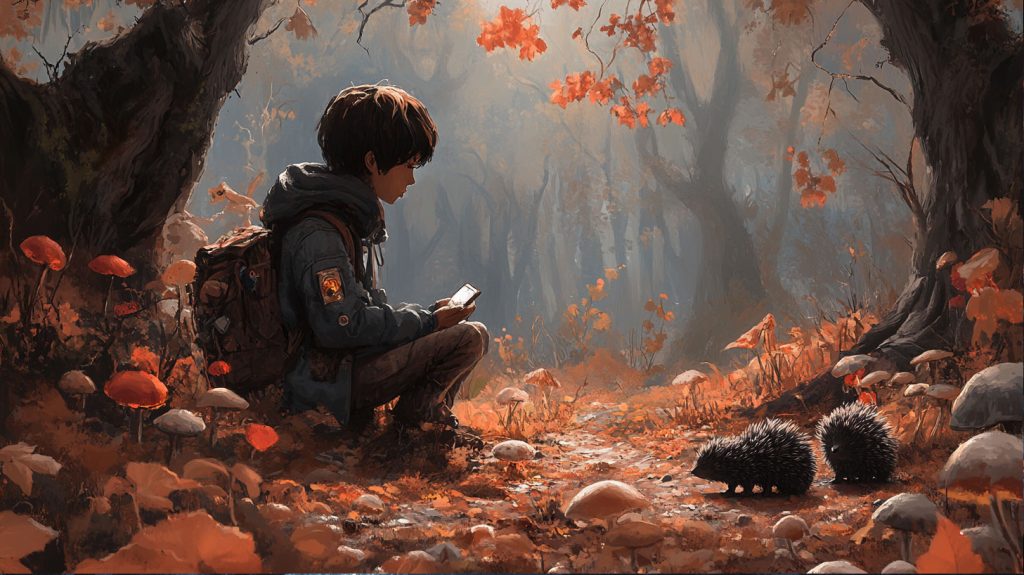
Gremlincore is an emerging aesthetic and subculture that finds beauty in the overlooked and the unconventional. Rooted in folklore and deeply connected to the natural world, it revels in the darker, dirtier side of ecosystems and objects often dismissed as undesirable. A kindred spirit to other nature-inspired aesthetics like cottagecore and fairycore, gremlincore sets itself apart with its embrace of chaos, comfort, and a gritty appreciation for the odd and imperfect.
The Origins of Gremlincore
The roots of gremlincore trace back to the early 2010s on Tumblr, where it was initially known as "goblincore." While both terms share similarities, the shift to "gremlincore" highlights an even grittier, more mischievous take on nature and folklore. The aesthetic quickly resonated with queer communities, where its focus on individuality and embracing non-conformity found a natural home.
Key Characteristics
Gremlincore is defined by an aesthetic palette and style that reflects its unconventional ethos. Hallmarks of the subculture include:
- Darker Earth Tones: Shades of brown, green, and gray dominate, echoing the hues of moss, soil, and stones.
- Second-Hand and Worn Clothing: Thrifted, patched, and weathered clothing pieces are preferred, emphasizing sustainability and a rugged, lived-in look.
- Comfort Over Convention: Loose-fitting, cozy outfits prioritize function and personal comfort over traditional style rules.
- Clashing Colors: A playful disregard for traditional color matching mirrors the chaotic beauty of nature.
- Natural and Shiny Objects: From moss-covered rocks to shiny trinkets, gremlincore treasures items that feel magical in their imperfection.
Celebrating the "Undesirable"
What sets gremlincore apart is its unapologetic celebration of things society often overlooks or dismisses. Enthusiasts find charm in:
- Fungi and Mushrooms: From vibrant toadstools to humble shelf fungi, these organisms are symbols of life’s resilience and mystery.
- Furry and Slimy Animals: Rats, frogs, snails, and other creatures traditionally considered "unclean" or "pests" are appreciated for their unique roles in ecosystems.
- Moss and Soil: The damp, earthy textures of moss-covered stones and rich soil are central to the aesthetic’s tactile appeal.
- Animal Skeletons and Bones: Skeletons and skulls serve as memento mori, celebrating the life cycles of nature.
- Rocks and Plants: Unique stones, lichen, and wild greenery remind adherents of the small wonders in every environment.
The "Other Side of Things"
At its core, gremlincore embodies a celebration of the "other side"—a world often hidden in plain sight. It invites us to appreciate life’s messier, less polished aspects. It’s not about rejecting beauty but redefining it to include what is raw, wild, and real. Whether it’s the damp underbrush of a forest or a collection of rusted trinkets, gremlincore finds magic where others might see only decay.
Why Gremlincore Matters
In a society increasingly focused on perfection and minimalism, gremlincore is a refreshing counterculture. It embraces sustainability through thrifted goods, fosters inclusivity by celebrating difference, and nurtures a connection to the natural world. Gremlincore reminds us that there’s beauty in chaos and value in what’s often dismissed.
Whether you’re collecting shiny pebbles, admiring the texture of moss, or simply wearing a patched-up sweater that makes you feel at home, gremlincore invites you to embrace the messy, magical side of life. After all, who says beauty has to be pristine?